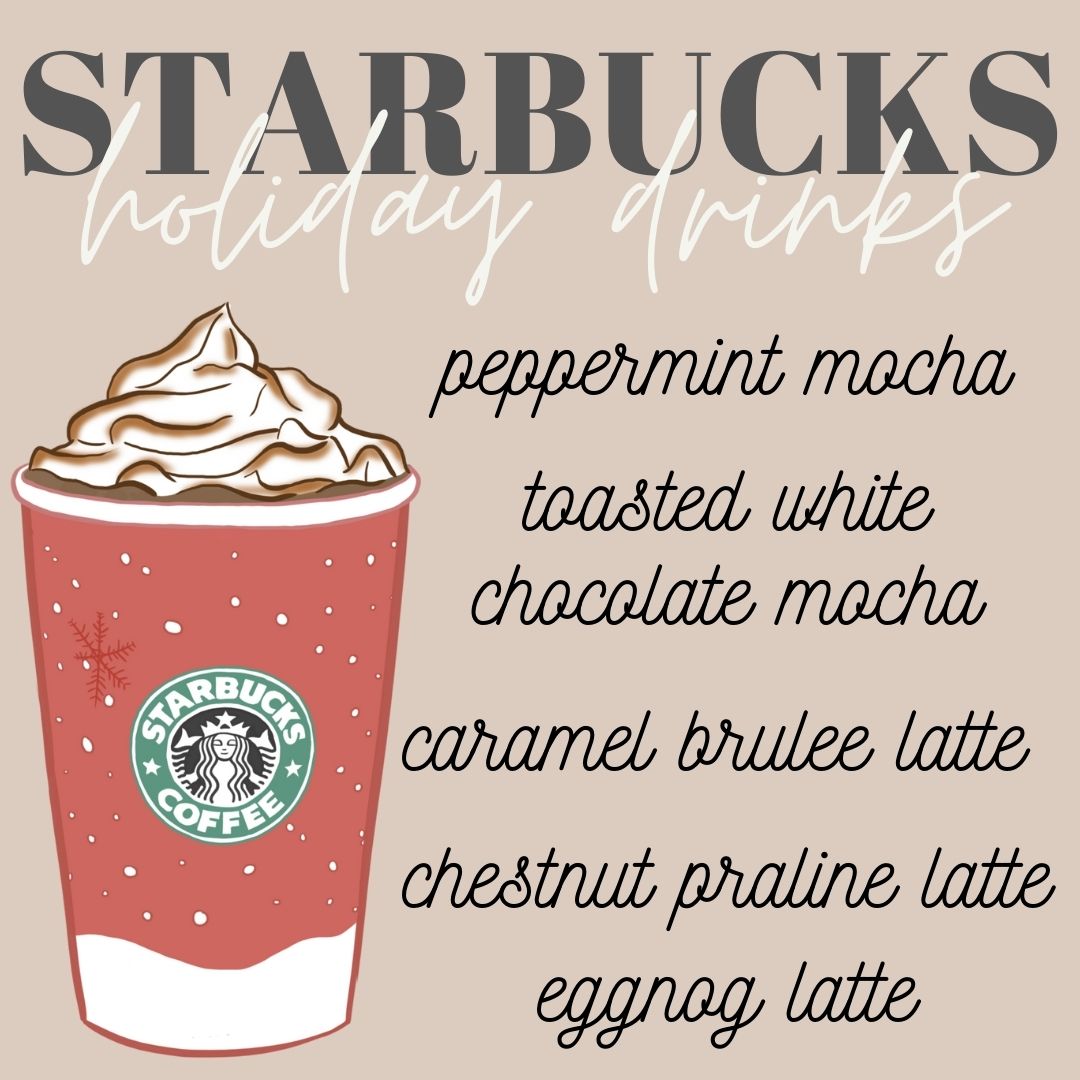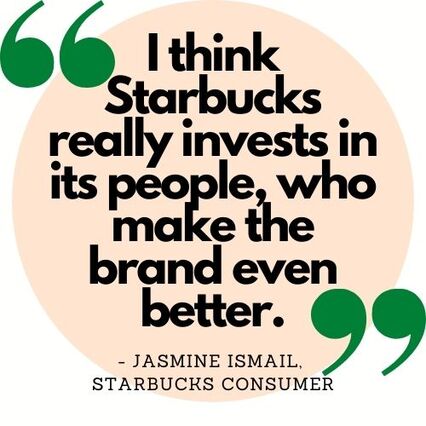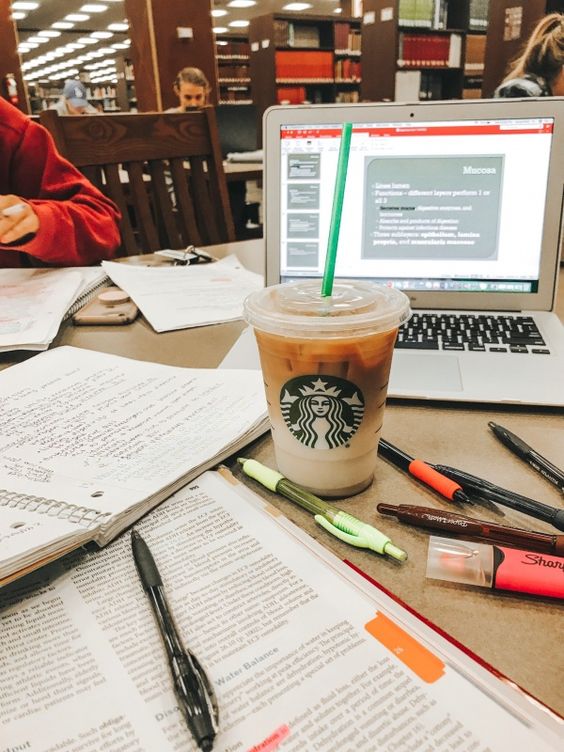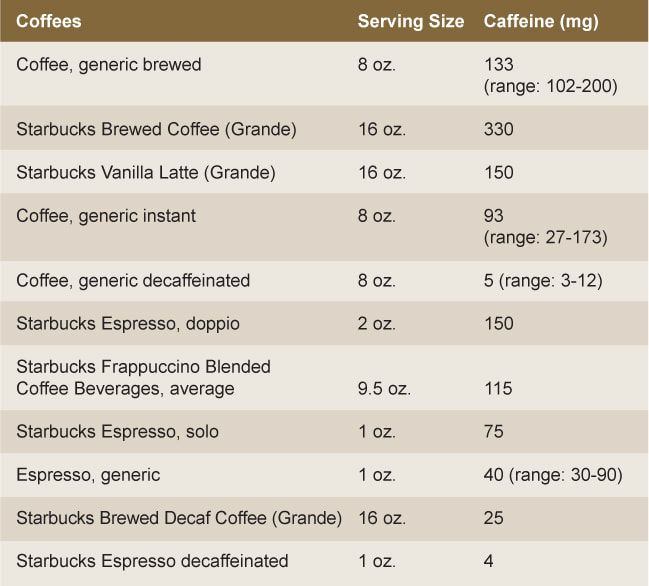If I’m being honest, I’m frequently fueled by the four major food groups: iced americano, caramel macchiato, iced toffee nut latte (a hidden gem), and sweet cream cold brew, all supplied by America’s favorite green-emblemed coffee clutch: Starbucks.
The nationally-recognized roastery has 13,608 franchises across the U.S., serving roughly 10,000 caffeine chasers daily. And though its competitor proclaims ‘America runs on Dunkin’,’ Starbucks reels in $26.5 billion in revenue among its 30+ blends of coffee, more than the orange-and-pink-coated company that sells munchkins with $1.4 billion, an article published in Forbes outlines.
Despite feeling like I am the coffee chain’s primary source of revenue whenever a barista clad in a forest-green apron hands me my venti, an entourage of Starbucks enthusiasts exist all around the world. So, what’s the scoop on the caffeine craze? Sociology doctorates, food and drink trend experts, Starbucks consumers, and of course, experts from the company that brings you tall, grande, and venti® (and trenta®, too) hone in on what molds the masses to America’s favorite coffee shop.
The nationally-recognized roastery has 13,608 franchises across the U.S., serving roughly 10,000 caffeine chasers daily. And though its competitor proclaims ‘America runs on Dunkin’,’ Starbucks reels in $26.5 billion in revenue among its 30+ blends of coffee, more than the orange-and-pink-coated company that sells munchkins with $1.4 billion, an article published in Forbes outlines.
Despite feeling like I am the coffee chain’s primary source of revenue whenever a barista clad in a forest-green apron hands me my venti, an entourage of Starbucks enthusiasts exist all around the world. So, what’s the scoop on the caffeine craze? Sociology doctorates, food and drink trend experts, Starbucks consumers, and of course, experts from the company that brings you tall, grande, and venti® (and trenta®, too) hone in on what molds the masses to America’s favorite coffee shop.
The Brand
|
As a household name, Starbucks certainly brings a powerful brand to the business world. Not only do coffee lovers relish the seasonal holiday cups but also delight themselves in simply holding the famous cups, whether on their morning commute, walking throughout campus or in a work meeting with clients. A strategic analysis by Harvard even declared Starbucks the most ‘recognized brand in the coffeehouse segment.’
“Starbucks is what you call a ‘market driving firm,’ innovating products that eventually get adopted,” Zeynep Arsel, P.hD.of marketing with a specialization in sociology, said. “With a diverse portfolio of products and an in-store experience, Starbucks took an ordinary cup of coffee and transformed it into a complex experience that is scalable across the globe.”
Dr. Arsel’s research specializes in consumption and marketplaces, noting that Starbucks once pursued a “very aggressive strategy of expansion,” dominating smaller mom and pop coffee shops with its mermaid logo -- quite literally drowning the coffee market with the nationwide tall, grande and venti trio. As a Canadian resident who fancies Tim Hortons, she rarely visits one of her country’s 1,400 locations, but every so often indulges in a gingerbread latte during the holidays to “pretend [she] is having cake.” |
And this brings this coffee craze-analysis to one of its most prominent factors: the red-and-green-coated cups that have people singing fa-la-la-la-la en route to pick up their favorite frappuccino.
But it doesn’t end with the winter holiday season.
In an email statement, Kara Nielsen, WGSN Food and Drink Forecaster (also known as a ‘trendologist’) said “Starbucks has helped put coffee culture on the map in the U.S. and has succeeded in elevating how much consumers are willing to spend for a cup of coffee.” She added they have been innovative marketers, most especially with the Pumpkin Spice Latte, introduced back in 2003, which sparked a flurry of imitators across not only beverages but categories from lip balm to even Kit Kats.
But it doesn’t end with the winter holiday season.
In an email statement, Kara Nielsen, WGSN Food and Drink Forecaster (also known as a ‘trendologist’) said “Starbucks has helped put coffee culture on the map in the U.S. and has succeeded in elevating how much consumers are willing to spend for a cup of coffee.” She added they have been innovative marketers, most especially with the Pumpkin Spice Latte, introduced back in 2003, which sparked a flurry of imitators across not only beverages but categories from lip balm to even Kit Kats.
“Holiday and seasonal changes are a big push for Starbucks and they roll out a lot of new drinks, essentially saying, ‘hey, get a Pumpkin Spice Latte,’” Madison Pena, a journalism student at The College of New Jersey, said. “It’s their most popular drink in the fall, by far.”
Though a cold brew coffee is her go-to drink, Kara also provided her expertise on why Americans’ ‘love affair’ with the popular PSL has lasted so long (yes, Americans have been, and are *still* obsessed).
A coffee obsession is typically paired with a social media obsession, where digital media users decked out in designer denim test out all the angles for the perfect post. Rachel Hosie, a Senior Lifestyle Reporter at Insider Life, knows this better than anyone as she has a keen eye for the latest food and drink trends.
“Starbucks has established the strongest global brand of all its competitors, particularly among the demographic of young women,” Hosie said. “Its clear branding, distinctive across the world, ensures it stands out and, crucially, is very Instagrammable, as are many of its drinks like unicorn frappuccinos.”
Though a cold brew coffee is her go-to drink, Kara also provided her expertise on why Americans’ ‘love affair’ with the popular PSL has lasted so long (yes, Americans have been, and are *still* obsessed).
A coffee obsession is typically paired with a social media obsession, where digital media users decked out in designer denim test out all the angles for the perfect post. Rachel Hosie, a Senior Lifestyle Reporter at Insider Life, knows this better than anyone as she has a keen eye for the latest food and drink trends.
“Starbucks has established the strongest global brand of all its competitors, particularly among the demographic of young women,” Hosie said. “Its clear branding, distinctive across the world, ensures it stands out and, crucially, is very Instagrammable, as are many of its drinks like unicorn frappuccinos.”
The Environment
Millions gather around Starbucks as a place of worship, simply because of its environment. The modern study and mid-afternoon coffee break scene is seasoned as the perfect stop. Each Starbucks franchise is consistent with its material palette: dark wood fixings, round recessed lights and, of course, its famous logo.
“The first thing I notice when I walk into Starbucks is not necessarily the green-glaring logo but actually the display case with the cake pops, chocolate croissants, and other menu items,” said Michael McDonnell, N.J.-based architect who designs Starbucks franchises for construction. “The charging stations I mark in the electrical plan are intentional so more people sit down, have a cup of coffee and stay to study."
Harvard’s strategic analysis of Starbucks also acknowledged the location and aesthetic appeal of its stores as one of its strengths. The franchise’s visually-appealing landscape, coupled with its attached ‘cool factor’ in high-traffic locations such as urban and small-town retail centers, office buildings, university campuses, off-highway stops and especially Target retailers, produces a long line leading to the barista (which is still a problem).
The research also notes the chain provides ‘free WiFi, great music, great service, warm atmosphere, and provides an environment of community meeting spot, which forms a wider part of the Starbucks Experience.’
“I love Starbucks mostly for their culture and people, and I’ve never gone to a Starbucks and had a bad experience with any barista,” Jasmine Ismail, a recent graduate of the University of Southern California (USC), said. “They’re always willing to help and they make sure that your drink is everything you want and enjoy. I think Starbucks really invests in its people, who make the brand even better.”
“The first thing I notice when I walk into Starbucks is not necessarily the green-glaring logo but actually the display case with the cake pops, chocolate croissants, and other menu items,” said Michael McDonnell, N.J.-based architect who designs Starbucks franchises for construction. “The charging stations I mark in the electrical plan are intentional so more people sit down, have a cup of coffee and stay to study."
Harvard’s strategic analysis of Starbucks also acknowledged the location and aesthetic appeal of its stores as one of its strengths. The franchise’s visually-appealing landscape, coupled with its attached ‘cool factor’ in high-traffic locations such as urban and small-town retail centers, office buildings, university campuses, off-highway stops and especially Target retailers, produces a long line leading to the barista (which is still a problem).
The research also notes the chain provides ‘free WiFi, great music, great service, warm atmosphere, and provides an environment of community meeting spot, which forms a wider part of the Starbucks Experience.’
“I love Starbucks mostly for their culture and people, and I’ve never gone to a Starbucks and had a bad experience with any barista,” Jasmine Ismail, a recent graduate of the University of Southern California (USC), said. “They’re always willing to help and they make sure that your drink is everything you want and enjoy. I think Starbucks really invests in its people, who make the brand even better.”
|
One of those people is Damian Santo, a former Miami, Fla. barista, who continues to be a devout consumer 15 years later.
“The company culture was strong and supportive,” he remembers. “The reason I love Starbucks is because of the ability to get consistency, no matter where you are at in the world. I know that the drink I ordered will be prepared to the exact same standards and recipe whether in NYC or the middle of nowhere.” The Coffee AddictionIt’s no surprise Americans are clingy to their cold-pressed coffee and the buffet of creamers, sugars and syrups to add to their caffeine-inducing experience.
|
As a college student, Madison sometimes splurges on an iced almond milk latte with two shots of blonde espresso (which she claims to be tastier than the average espresso offered at Starbucks), but would not call herself coffee-obsessed. Yet, she believes the coffee addiction stems from its marketing implementation.
“Their marketing strategy is unbeatable, especially with product placement,” she said. “In almost every TV show, people are pulling up to Starbucks and not Dunkin’, unfortunately.” To which she added #JusticeForDunkin,’ as she favors the other beverage chain for her mid-afternoon iced tea runs in between classes and her virtual internship.
Madison recognizes a crucial component of the coffee craze comes from Gen Z, often viewing their Starbucks purchase as a reward and not just satisfaction of their vanilla bean craving.
“I use Starbucks as a rewards system, and I think a lot of other college students do, too,” she adds. “Starbucks is their reward for studying all day and in turn, makes them more productive. It’s also psychological -- sometimes you feel more ‘put together’ when you get a coffee in the morning before your study session.”
“Their marketing strategy is unbeatable, especially with product placement,” she said. “In almost every TV show, people are pulling up to Starbucks and not Dunkin’, unfortunately.” To which she added #JusticeForDunkin,’ as she favors the other beverage chain for her mid-afternoon iced tea runs in between classes and her virtual internship.
Madison recognizes a crucial component of the coffee craze comes from Gen Z, often viewing their Starbucks purchase as a reward and not just satisfaction of their vanilla bean craving.
“I use Starbucks as a rewards system, and I think a lot of other college students do, too,” she adds. “Starbucks is their reward for studying all day and in turn, makes them more productive. It’s also psychological -- sometimes you feel more ‘put together’ when you get a coffee in the morning before your study session.”
|
Honing in on Starbucks as a productivity platform is Omar Lizardo, Ph.D., Sociologist and Professor at UCLA, who said coffee is tied to workaholic tendencies, like the ‘work hard, play hard’ mentality. The coffee chain also earns brownie points for creating a ‘modern luxury’ atmosphere, entwined with the convenience and feel of a traditional coffee shop. He calls this the ‘magic middle ground.’
“Starbucks has tapped into luxury consumption with its branding, products -- like Italian-style espresso and Nitro brews -- and its services as well,” Lizardo adds, embedding his expertise in consumption, social networks, and cultural and organizational sociology. As a basic black coffee buyer at the company, he believes Starbucks’ marketing strategy, as well as the social stigma declaring coffee beans promotes productivity, is the formula for America’s coffee addiction. Jasmine also vouches for the Starbucks covert productivity model, remembering how she was a regular at the four on-campus Starbucks locations at USC -- all of which she classified as “go-to coffee shops to get work done.” Each coffee shop saw her a couple of times a week, especially if she was on a time crunch to complete a midterm or essay. And while interning from home, she still has her caffeine fix -- an iced chestnut praline latte with one pump of chai, half sweet, with oat milk, her holiday favorite which she picks up every morning. Not only recognizing Starbucks as a place for productivity, Jasmine also vouches how the coffee chain is ‘HUGE’ in California. The state has the most locations in the U.S. When she moved to Los Angeles for college, she noticed a saturation of Starbucks shops in the palm tree-lined city. |
“There is a Starbucks in every shopping center I pass by,” she said. “There are 21 different Starbucks in my city (Irvine, CA), and I also see a lot of grocery stores such as Albertsons or Ralphs that have a Starbucks inside the store as well -- further contributing to the coffee craze we see in America.”
|
According to Kukani Health System in Honolulu, Hawaii, caffeine is America’s ‘most popular drug,’ its medical research stating Starbucks’ 16.oz Grande brewed coffee has the most caffeine per mg compared to other beverages.
“A large portion of the world is addicted to caffeine, and Starbucks pushes this obsession to younger customers with its frappuccinos,” Madison said. “These drinks are the gateway to more caffeinated drinks Starbucks offers, and then he or she will eventually graduate to drinks with a lot of caffeine and sugar, so it’s a slippery slope.” Side note: The company also offers a Puppuccino, a bark-tastic favorite solely consisting of whipped cream in a logo-marked cup. Yet, despite all the clear evidence for the coffee craze, not everyone coagulates to coffee (maybe not even the puppies). “For some people, holding a Starbucks cup may be a status symbol, but for others, it’s something they wouldn’t be caught dead with, for fear of being seen as ‘basic,’ who supports massive global corporations instead of independent producers,” Hosie notes. “Equally, some people would argue it’s no longer socially acceptable to carry a disposable coffee cup, which could affect Starbucks’ brand reputation.” |
While the Starbucks culture is arguably not eco-friendly in some respects, it certainly is progressive in its mission: providing quality service, an atmosphere akin to a neighborhood second home and, undoubtedly, world-class coffee.




